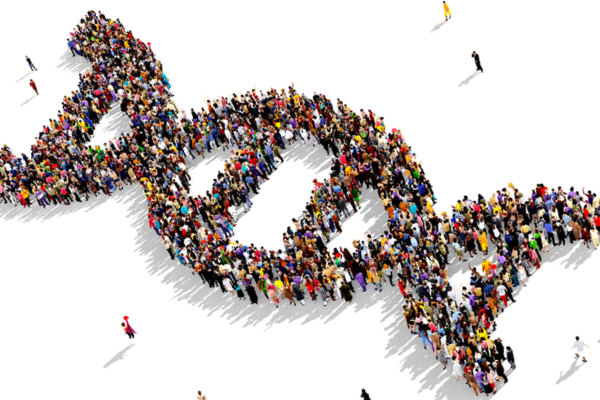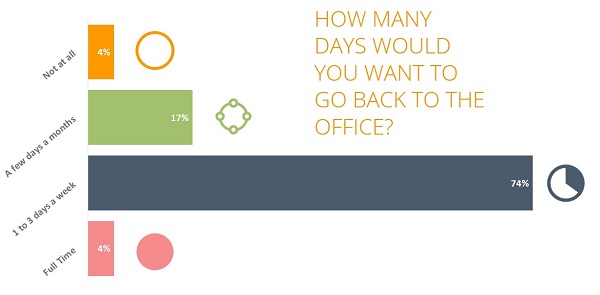As leaders, never before have we faced such rapid change and uncertainty, nor had to adapt at such pace. With light at the end of the tunnel for social distancing restrictions – many leaders are grappling with the vital question: Why do we need to return to the office? Our blog this month explores what we have learned from our COVID-19 experiences and how they may shape our new way of working.

With the spectre of COVID-19 still looming large, many leaders are grappling with a vital question: Why do we need to return to the office?
Some people are expected to stay away until a vaccine is (fingers crossed) developed. Employees of Twitter have been told they are welcome to work from home forever, while many other knowledge workers don’t expect to be recalled until at least the end of the year.
By the time everyone thinks it is safe to go back, there may be no desks available anyway. Employers, trying to stave off the expected recession, may have sublet or surrendered the space.
Our own research in the past two weeks across a broad range of companies strongly indicates the main reason that people are resisting the return to the office is the anxiety of travelling on public transport.
However, an overwhelming number of respondents – 96% — said they did want to go back to office in some form:

As humans we are social creatures. Going back to the office is a social anchor. Creating the incidental and deeply relational connections – over the watercooler, in the corridor, in the corporate kitchen – can’t be replicated over video conference. Self-isolation is creating what in psychological terms is known as social exclusion.
Neuroscientist Matthew Lieberman, author of Social: Why Our Brains Are Wired To Connect, says our need to connect is as fundamental as our need for food and water. He says social exclusion creates a brain response similar to physical pain.
People need people … so does business
Aside from the mental health risks of social isolation and loneliness, there are other important reasons for people to gather in person. Good communication relies on the subtle physical cues that come from face-to-face interactions. This is one of the reasons a day of videoconferences is exhausting – we have to work so much harder to “read” other people.
We also learn so much from our incidental interactions with others at work, especially when those people bring different life experiences (being of different generations and cultural backgrounds).
Having strong team and peer groups relationships at work, as Gallup research shows, dramatically increases the amount of effort people put into their work. We feel like we belong to a tribe or community and have a sense of togetherness around our purpose and meaning. This creates great energy when we are all together working towards the same goals. It is so much harder to feel a sense of relationship and connection in a virtual world.
Of course, there is another pressing reason for us to go back to the office. We need to get away from the endless distractions and conflicting priorities i.e. the leaf-blowers, barking dogs, couriers, visitors who don’t believe it is a “workday” and for some of us, small children. We need some peace and quiet and the commute to and from work offers the separation from work and home.
Let’s not forget what we have learned.
Having months away has been an opportunity for many of us to reassess our priorities. It would be a great shame to go back to old habits reflexively.
Here are a few things that should stay with us:
A sense of belonging: If we want people to return to the workplace, we have to find compelling reasons to be there. One such motivation is our need to be part of a tribe.
We also need to have a purpose to be at work i.e. team meetings for project based activities, management meetings, to brainstorm and create. The physical distancing restrictions are an opportunity to assess whether our office layouts and practises were welcoming to our “work family”, or made people feel like visitors.
Hot-desking and activity-based-working do not suit everyone. Perhaps it is time to tailor work environments to individuals, with personal desks for those that want them, collaborative space when they need it, seclusion and quiet when they want to concentrate.
Trust and care: Leaders have had to learn to trust their people. Letting go of the harness would have been a cultural shock to some of those people. Those employees who proved their reliability should continue to be trusted to make adult decisions about how, where and when they work. Learning to manage by output not input is a new muscle to develop for leaders who are used to a more micro-management style.
At the same time, leaders have had to demonstrate empathy during the crisis to help take care of employees who were struggling emotionally, physically or economically. Relationships have been deepened and, after COVID-19, workers will expect that level of care to continue. The challenge will be demonstrating care while also encouraging the performance and accountability required for business results.
People have had to learn to be more direct, explicit and deliberate in their communication to ensure they would not be misunderstood in a virtual meeting.
Performance: Over the past few months, leaders had to work out how to get results when everything changed. Some questions to consider are:
- How will we assess the performance of our people in the future?
- What has motivated them?
- How adaptable were we?
- Where did innovation come from?
- What impact did working from home have on productivity and what can we learn from that?
- Do some of our policies and processes get in the way of our effectiveness?
Priorities: One of the first things we all noticed during the shutdown was a shift in our perspective of what is important to us. We may have enjoyed the extra time with family and worried more about those from whom we were separated.
We focused more on our health.
Many of us wondered why we invested so much in work at the expense of other things we value – and now realise that a better balance is possible. Let’s not lose the good things we have learned in this extraordinary time.










